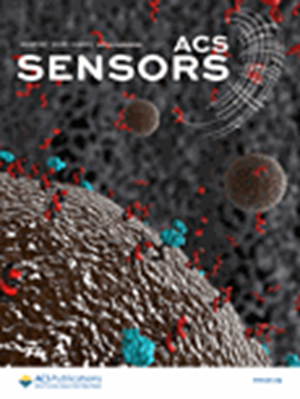Ready-to-Use OECT Biosensor toward Rapid and Real-Time Protein Detection in Complex Biological Environments
IF 8.2
1区 化学
Q1 CHEMISTRY, ANALYTICAL
引用次数: 0
Abstract
Organic electrochemical transistor (OECT) sensors are a promising approach for point-of-care testing (POCT) thanks to their high sensitivity and ability to operate in an aqueous environment. However, OECTs suffer from biological fouling at the gate and channel interfaces when exposed to complex biological samples. These nonspecific interactions can often obscure the weak signal from the trace biomarker, compromising the accuracy and sensitivity of measurements and even leading to false detection outcomes. In this study, we developed an intrinsically antifouling OECT by modifying both the gate and channel with phosphorylcholine-functionalized poly(3,4-ethylenedioxythiophene) (PEDOT-PC). This modification notably enhances the OECT performance by leveraging the material’s inherent mixed electron-ion conductivity, which increases transconductance and decreases gate voltage. Additionally, the zwitterionic nature of the device enables its ultrasensitive detection of C-reactive protein (CRP) with a limit of detection of 0.11 pg/mL, mediated by calcium ions. This exceptional sensitivity arises from the device’s enhanced transconductance and ability to sense through the gate and channel interfaces simultaneously. Furthermore, the zwitterionic OECT sensor has demonstrated the fastest sample-to-result time for protein detection (≤60 s), making it highly suitable for real-time CRP monitoring. Importantly, it provides precise real-time detection of CRP without interference from nonspecific proteins such as bovine serum albumin, fibrinogen, lysozyme, and fetal bovine serum. We envision this intrinsically antifouling OECT device offering a robust biosensing platform for the rapid and convenient detection of biomarkers in complex biological environments, providing a reliable and efficient solution for POCT diagnostics.

面向复杂生物环境中快速实时蛋白质检测的即用型OECT生物传感器
有机电化学晶体管(OECT)传感器由于其高灵敏度和在水环境中工作的能力,是一种很有前途的点护理测试(POCT)方法。然而,当暴露于复杂的生物样品时,oect在栅极和通道界面遭受生物污染。这些非特异性相互作用通常会掩盖痕量生物标志物的微弱信号,损害测量的准确性和灵敏度,甚至导致错误的检测结果。在这项研究中,我们通过磷酸胆碱功能化聚(3,4-乙烯二氧噻吩)(PEDOT-PC)修饰门和通道,开发了一种内在防污的OECT。这种修饰通过利用材料固有的混合电子-离子电导率显著提高了OECT性能,从而增加了跨导性并降低了栅极电压。此外,该装置的两性离子性质使其对c反应蛋白(CRP)的超灵敏检测具有0.11 pg/mL的检测限,由钙离子介导。这种特殊的灵敏度源于器件增强的跨导性和同时通过栅极和通道接口进行感应的能力。此外,两性离子OECT传感器已经证明了蛋白质检测的最快样品到结果时间(≤60秒),使其非常适合实时CRP监测。重要的是,它提供精确的实时检测CRP,而不受非特异性蛋白(如牛血清白蛋白、纤维蛋白原、溶菌酶和胎牛血清)的干扰。我们设想这种本质上防污的OECT设备提供了一个强大的生物传感平台,可以在复杂的生物环境中快速方便地检测生物标志物,为POCT诊断提供可靠高效的解决方案。
本文章由计算机程序翻译,如有差异,请以英文原文为准。
求助全文
约1分钟内获得全文
求助全文
来源期刊

ACS Sensors
Chemical Engineering-Bioengineering
CiteScore
14.50
自引率
3.40%
发文量
372
期刊介绍:
ACS Sensors is a peer-reviewed research journal that focuses on the dissemination of new and original knowledge in the field of sensor science, particularly those that selectively sense chemical or biological species or processes. The journal covers a broad range of topics, including but not limited to biosensors, chemical sensors, gas sensors, intracellular sensors, single molecule sensors, cell chips, and microfluidic devices. It aims to publish articles that address conceptual advances in sensing technology applicable to various types of analytes or application papers that report on the use of existing sensing concepts in new ways or for new analytes.
 求助内容:
求助内容: 应助结果提醒方式:
应助结果提醒方式:


